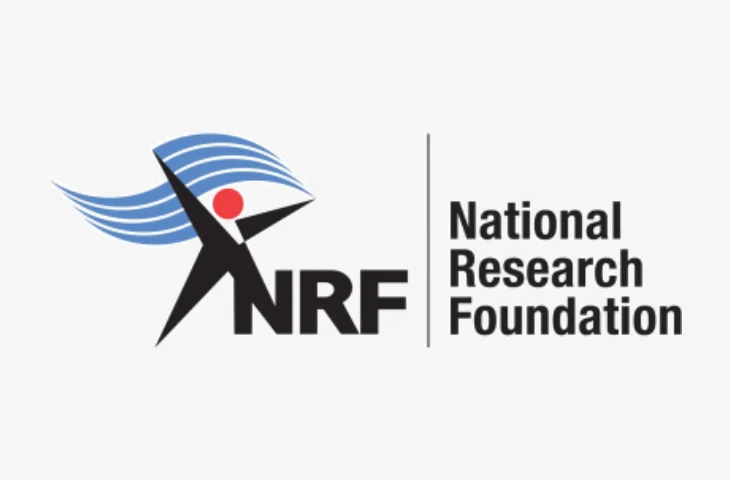India is rapidly advancing towards becoming a global leader in science, technology, and innovation. To achieve this vision, the Government of India has taken a historic step by establishing the Anusandhan National Research Foundation (ANRF) through the ANRF Act, 2023. This body is designed to provide strategic direction for research, development, and innovation across multiple disciplines.
The ANRF has a strong mandate to seed, nurture, and expand a culture of research in India’s universities, colleges, R&D laboratories, and research institutions. By bridging the gap between industry, academia, and government, the foundation will create a strong ecosystem that boosts India’s scientific capacity and aligns with long-term national goals like Viksit Bharat 2047.
In this blog, we have provided the objectives, functions, structure, challenges, and significance of the ANRF.
What is the Anusandhan National Research Foundation (ANRF)?
The Anusandhan National Research Foundation (ANRF) is an apex body established by the Anusandhan National Research Foundation Act, 2023. It provides high-level strategic direction for scientific research, innovation, and entrepreneurship in India.
It was created by subsuming the Science and Engineering Research Board (SERB), which was earlier set up in 2008. Unlike SERB, which focused primarily on science and engineering, the ANRF covers all disciplines, including natural sciences, engineering, technology, environment, agriculture, health, humanities, and social sciences.
The foundation aims to create an integrated research ecosystem that fosters collaboration, transparency, and innovation.
Why was ANRF Established?
The establishment of the ANRF has multiple reasons, driven by gaps in India’s research ecosystem:
- Low Research Spending – India’s Gross Expenditure on Research and Development (GERD) is about 0.7% of GDP, much lower than the global benchmark of 2%.
- Limited Private Sector Participation – Most of India’s R&D expenditure (about 52%) comes from the government, whereas in countries like the US, Germany, and China, the private sector contributes significantly more.
- Brain Drain – Due to fewer opportunities and limited infrastructure, many talented Indian researchers move abroad.
- Need for Inclusive Research – Research in semi-urban and rural universities is underfunded and requires more focus.
- Global Competitiveness – India must align with global best practices to become a world leader in innovation.
What are the Objectives of the ANRF?
The objectives of the Anusandhan National Research Foundation are comprehensive and future-focused:
- Prepare Roadmaps for short, medium, and long-term research and development in key fields.
- Seed and Grow Research at academic institutions, particularly at state universities and colleges with limited research capacity.
- Fund Competitive Grants through peer-reviewed proposals.
- Support Research Infrastructure to provide an environment conducive to scientific pursuit.
- Enhance National Priorities by focusing on health, agriculture, environment, and emerging technologies.
- Promote Translation of Research into technologies and innovations.
- Encourage Private Sector and State Participation in R&D.
- Strengthen International Collaboration and foster the exchange of scientific talent.
- Build a National Repository to track research outcomes and expenditures.
How is ANRF Linked with the National Education Policy (NEP) 2020?
The National Education Policy (NEP) 2020 strongly recommended enhancing research in higher education institutions. ANRF directly reflects this vision by:
- Integrating research opportunities within universities.
- Creating a culture of inquiry, critical thinking, and innovation among students and faculty.
- Prioritizing state universities and colleges, which have been historically underfunded.
- Promoting interdisciplinary research across science, technology, and humanities.
Get ready to crack government job exams with leading educators
What are the Functions of the ANRF?
The ANRF performs a wide range of functions to build a robust ecosystem for research and innovation:
- Strategic Roadmaps – Planning short, mid, and long-term research priorities.
- Research Grants – Providing financial assistance through competitive, peer-reviewed proposals.
- Infrastructure Development – Supporting labs, centers of excellence, and research chairs.
- Translation of Research – Ensuring research leads to usable technologies.
- Global Engagement – Enhancing India’s role in global research collaborations.
- Encouraging Investments – Attracting contributions from the private sector, public sector enterprises, and industries.
- Data Collection – Conducting annual surveys to track outcomes of scientific research.
- Capacity Building – Strengthening research in nascent institutions through mentorship programs.
What are the Major Initiatives of the ANRF?
The foundation has already launched several key initiatives:
| Initiative | Key Features |
| Partnerships for Accelerated Innovation and Research (PAIR) | – Works on a hub-and-spoke model – Pairs top institutions with emerging universities for mentorship and collaboration – Strengthens research capacity at smaller institutions |
| State University Research Excellence (SURE) | – Focuses on promoting high-quality research in state universities – Bridges the gap between central institutions and state institutions |
| National Postdoctoral Fellowship (N-PDF) | – Supports early-career researchers to pursue independent research – Builds a pipeline of skilled scientists and innovators |
How is the ANRF Governed?
The governance structure of ANRF ensures accountability and high-level leadership:
Governing Board
- President: Prime Minister of India.
- Vice Presidents: Union Minister of Science and Technology, Union Minister of Education.
- Member Secretary: Principal Scientific Advisor.
- Other Members: Secretaries of key departments (DST, Biotechnology, Health Research, etc.), NITI Aayog member, and experts from academia, industry, and social sciences.
Executive Council
- Led by the Principal Scientific Advisor.
- Includes secretaries of various departments like Atomic Energy, Defence, Space, Agriculture, etc.
- Responsible for implementation, reviewing proposals, and managing finances.
How Much Funding has been Allocated to ANRF?
The ANRF is expected to mobilize ₹50,000 crore over the period 2023–2028.
- Around 30% (₹14,000 crore) will come from government support.
- Around 70% (₹36,000 crore) is expected from the private sector and industries.
This large infusion of funds aims to make India a global R&D hub.
What are the Challenges Before ANRF?
While ANRF has a strong vision, there are challenges:
- Private Sector Dependence – 70% of funding depends on private participation, but there is no strong mechanism to guarantee this.
- Centralization Concerns – The Act does not include state government representatives in the decision-making process.
- Exclusion of Stakeholders – Limited role of ministries like finance, economics, and CPSEs.
- Implementation Gap – Translating plans into outcomes requires robust monitoring.
- Brain Drain – Talented youth may still move abroad if opportunities remain limited.
Why is ANRF Significant for India?
The establishment of ANRF holds great importance:
- Democratization of Science Funding – Extends funding to semi-urban and rural institutions.
- Boosts Innovation – Converts research into products, services, and technologies.
- Strengthens Higher Education – Empowers universities to focus on research and innovation.
- Encourages Collaboration – Builds synergy between government, industry, and academia.
- Global Recognition – Positions India as a global leader in research and innovation.
How does ANRF Align with Viksit Bharat 2047?
The ANRF Governing Body has stated that its strategies will align with the goals of Viksit Bharat 2047. This means:
- Long-term planning for R&D and innovation.
- Creating world-class infrastructure and human resources.
- Supporting India’s global ambitions in space, defence, health, and sustainable technologies.
Key Takeaway
| Aspect | Details |
| Established Under | Anusandhan National Research Foundation Act, 2023 |
| Replaced | Science and Engineering Research Board (SERB), 2008 |
| Governing Board President | Prime Minister of India |
| Administrative Department | Department of Science and Technology (DST) |
| Total Funding | ₹50,000 crore (2023–2028) |
| Government Share | ₹14,000 crore (approx. 30%) |
| Private Sector Share | ₹36,000 crore (approx. 70%) |
| Key Initiatives | PAIR, SURE, N-PDF |
| Objectives | Promote research, build infrastructure, support innovation, foster collaborations |
| Alignment | National Education Policy 2020, Viksit Bharat 2047 |
Also Check:
Questions based on Anusandhan National Research Foundation (ANRF)
1. Under which Act was the Anusandhan National Research Foundation established?
a) Science and Technology Act, 2022
b) ANRF Act, 2023
c) Research Development Act, 2021
d) National Innovation Act, 2023
e) None of the above
Answer: b) ANRF Act, 2023
2. Which body has been subsumed under the ANRF?
a) CSIR
b) DST
c) SERB
d) ISRO
e) DBT
Answer: c) SERB
3. What is the total funding allocation for ANRF between 2023–2028?
a) ₹25,000 crore
b) ₹50,000 crore
c) ₹75,000 crore
d) ₹1,00,000 crore
e) ₹15,000 crore
Answer: b) ₹50,000 crore
4. Who serves as the President of the ANRF Governing Board?
a) Union Minister of Science and Technology
b) Principal Scientific Advisor
c) Prime Minister of India
d) President of India
e) NITI Aayog Vice Chairperson
Answer: c) Prime Minister of India
5. Which program of ANRF pairs top institutions with smaller universities?
a) SURE
b) N-PDF
c) PAIR
d) STAR
e) I-STEM
Answer: c) PAIR
6. What percentage of ANRF’s funding is expected from the private sector?
a) 20%
b) 30%
c) 50%
d) 70%
e) 90%
Answer: d) 70%
7. Which department serves as the administrative body for ANRF?
a) CSIR
b) Department of Biotechnology
c) Department of Space
d) Department of Science and Technology
e) Ministry of Education
Answer: d) Department of Science and Technology
8. In which year was the Science and Engineering Research Board (SERB) established?
a) 2005
b) 2006
c) 2008
d) 2010
e) 2012
Answer: c) 2008
9. Which national policy strongly recommended the creation of ANRF?
a) National Science Policy 2013
b) National Innovation Policy 2014
c) National Education Policy 2020
d) Startup India Policy 2016
e) Make in India Initiative
Answer: c) National Education Policy 2020
10. What is the vision goal year linked with ANRF strategies?
a) 2025
b) 2030
c) 2035
d) 2047
e) 2050
Answer: d) 2047
- MISHTI Scheme, India’s Initiative to Restore Mangrove Ecosystems
- National Green Hydrogen Mission Features, Objectives, and Benefits
- Paramparagat Krishi Vikas Yojana, Transforming India’s Organic Farming
- Mission on Integrated Development of Horticulture NHM and HMNEH
- Swachh Bharat Mission, India’s Journey Towards Cleanliness and Hygiene
- SAGY, A Step Towards Holistic Development of Indian Villages

Hi, I’m Aditi. I work as a Content Writer at Oliveboard, where I have been simplifying exam-related content for the past 4 years. I create clear and easy-to-understand guides for JAIIB, CAIIB, and UGC exams. My work includes breaking down notifications, admit cards, and exam updates, as well as preparing study plans and subject-wise strategies.
My goal is to support working professionals in managing their exam preparation alongside a full-time job and to help them achieve career growth.
